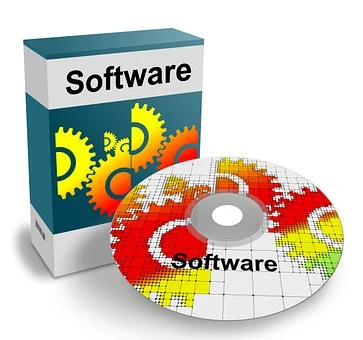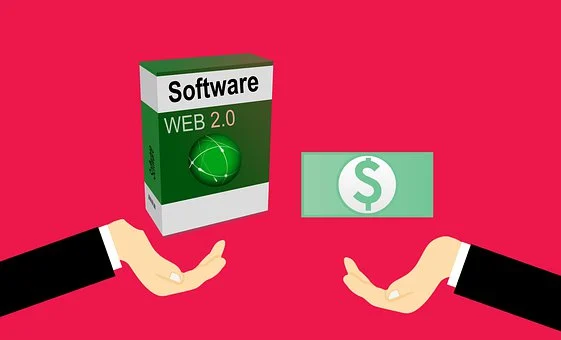Today, the term software applies to a range of things, from your scheduler app to software used by big companies. For a business, software development is key to staying ahead of the competition, saving time and effort, and sifting through huge amounts of data created every day.
With software development comes many challenges. There are choices to be made, an estimate to be made, and much more. The fact that you are here reading this means that you have decided to overcome these challenges. And we are here to help you estimate development costs for custom software.
However, before we dive into that, let’s take a look at the basics.
What is a Custom Software?
The term in itself is clear but let me explain anyway. Custom software or tailor-made software is specially designed for an organization, and it is designed with features and functions that align with the goals and needs of the organization.
Think of it this way, you want a ring made for yourself, but you don’t want something everyone has. You have a picture in your mind about how it should look, how thick it should be, and the kind of material and stones you want in it. So what would you do?
Of course, you have to get it made, or in other words, you have to get it custom-made. Custom software follows the same logic. Instead of using available software (read ‘off-the-shelf software), new software is developed that can cater to the company’s specific needs.
However, the catch is that custom software is comparatively costlier to develop. Wouldn’t that be obvious? A custom-made ring would cost you more, wouldn’t it?
Why Develop Custom Software?

If the initial cost is higher, why do you think companies develop custom software in the first place?
The answer lies in its flexibility and scalability. As custom software is made according to the needs of a company, it can later be expanded, or more functions can be added. Similarly, changes and maintenance can be done without a hitch. Being made to fit specific needs will also perfectly meet your requirements, and no feature will remain unused.
On the other hand, off-the-shelf software cannot be expanded even if your business grows, rendering it unadaptable. Since it is made for a generalized customer base, it may have various features that you may not need. These features may end up getting in your way. Conversely, it may not have specific features your company needs.
To sum it up, custom software has the following advantages;
- Scalability
- Easy to modify and expand
- Complete ownership
- Made to meet all your expectations
- Competitive advantage
- No unwanted features
Cost of Custom Software Development
Having established the importance of custom software development services, the next most important factor is the cost. Surveys place the average time taken to develop software around 4.5 months. The cost can vary depending on the software you are developing, features you need, the complexity of the application, problems areas, and target functions.
Now, let’s look at some factors that can determine the cost of custom software development.
- Size of your Software
Depending on the size of your software, the cost of development would also vary. It would help if you had clarity about all the functionalities of your software, and this can help you measure the size of the required software.
A small application would cost you less and take about 500 to 700 hours to develop. A medium-sized application can take anywhere between 700 and 1200 hours to develop, whereas an elaborate and complex application would take more hours.
2. Size of the Team
Most development teams have a Project Manager, a Developer, and a QA Tester. Depending on your software requirements, you may need a UI/UX expert, business analyst, architect, illustrator, etc.
This means that the team you hire can be as small as three members or as big as 12 or more. The size of your team affects the cost.
3. Type of Platform
The platform you choose to deploy your custom software can have an impact on the cost of development. There are many platforms to choose from, like Android, iOS, Mac, Windows, etc. Different platforms would require different development efforts, and hence the cost would also inevitably vary.
Many other factors can affect the development cost, like the tools you use for deployment, adopted developmental methodology, design requirements, etc. We have only outlined the basic factors, you must delineate before moving on to estimation.
Estimation Techniques
Once you have a clear idea of the size and scope of your software, you can estimate how much the development process would cost. You may have heard of estimations that make use of case studies, and case studies can help you make rough estimates as to the development cost of your software.
Case studies provide information that can help estimate the size and cost of your project. For example, if you want to develop an app that tracks habits, you could study the development of a similar app and its different stages of development. This would help you arrive at a rough estimate of how much your custom software development would cost.
Here, we will share a few other easy estimation techniques you can use to calculate the cost of development;
- Parametric Estimation
- Bottom-up Estimation
- Three-point Estimation
Now, let’s take a closer look at each of them.
- Parametric Estimation
This type of estimation is known for its accuracy. The parametric estimation uses data from other projects to predict the cost of your project. Define parameters of your project like complexity, functional needs, technology, etc. And gather data from previous projects which have similar parameters.
The empirical link between the elements and the total units is then used to calculate the cost.
2. Bottom-up Estimation
Define the development process minutely and categorize them in terms of tasks and subtasks. Now evaluate the cost for each separate task and add up all the individual estimates. This would give you an idea of how much it would cost you to develop your custom software.
Since this kind of estimation evaluates individual tasks separately, it will be more accurate.
3. Three-point Estimation
When making an estimate, it can be detrimental if the worst-case scenarios are not taken into consideration. Not everything works out as you might want it to, and there’s always a chance that something might go wrong.
The three-point estimation considers three data points: the best scenario, the most likely scenario, and the worst scenario. Then, the average of these separate estimates is taken as the final estimate. This type of estimate leaves a margin for error and thus makes sure that you are not taken unawares by unexpected situations.
Conclusion
Unlike off-the-shelf software, calculating the development cost of custom software may appear difficult. However, if you have a clear vision of how you want the software to be, it is possible to estimate the cost without much hassle. Moreover, proper planning and accurate estimation can ultimately lead to cost reductions and better ROI.
